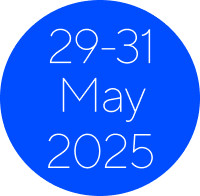Clinical seminar: Explore how movement quality and body awareness are crucial in mental health physiotherapy (CS-05)
Chair: Daniel Catalan-Matamoros (Spain)
Speakers: Taisei Yamamoto (Japan), Norma Elisa Galvez-Olvera (Mexico), Jonna Jensen (Denmark)
Learning objectives
- Understand the interconnection between movement quality, body awareness, mental health, and chronic pain, and how physiotherapeutic interventions can address these aspects in patients with complex conditions like major depression and chronic lower back pain.
- Explore and experience a range of physiotherapeutic techniques, including Basic Body Awareness Therapy (BBAT), that focus on improving body awareness and movement quality, and learn how these can be applied to enhance patients’ self-efficacy, coping strategies, and overall well-being.
- Recognize the importance of integrating physical, physiological, psychological, and social aspects of health in physiotherapy practice, particularly when treating patients with mental health disorders and chronic pain conditions, and identify strategies to implement this holistic approach in clinical settings.
Session outline
Introduction (10 minutes):
A real case of a 45-year-old patient with major depression and chronic lower back pain. The patient reports low energy, decreased motivation, and difficulty performing daily activities. Initial assessments reveal poor posture, limited range of motion, and reduced body awareness.
Clinical experiences (40 minutes)
The speakers will approach this case from a diverse range of physiotherapeutic clinical experiences as for example Basic Body Awareness Therapy (BBAT). The speakers will demonstrate and guide the participants to understand how physiotherapy interventions based on body awareness and movement quality can positively impact mental health disorders, long-lasting musculoskeletal problems, chronic pain, and overall well-being. Some examples will be:
- Grounding exercises: Standing or sitting with attention to the contact points between the body and the floor, promoting a sense of stability and presence.
- Breathing awareness: Guiding the patient to observe their breath without changing it, then introducing gentle breathing exercises to promote relaxation and body awareness.
- Slow, mindful movements: Performing simple movements like arm raises or gentle spinal rotations with full attention to the sensations and quality of movement.
- Postural awareness: Exploring different postures and their impact on mood and pain perception, emphasizing the connection between physical alignment and emotional state.
- Functional movement patterns: Practicing everyday movements like sitting to standing or reaching, focusing on efficiency and ease of movement.
The floor will be opened to participants for comments and questions during different moments of the session.
Take home messages (10 minutes)
The session will conclude with a brief reflection by each speaker showing how these clinical approaches integrate physical, physiological, psychological, and social aspects of health, addressing both depression and chronic pain through improved body awareness and movement quality. By focusing on these elements, physiotherapists can effectively enhance patients’ self-efficacy, coping strategies, and overall well-being.
Session delivered by: International Organisation of Physiotherapy in Mental Health
References
Sirpa Ahola, Arja Piirainen & Pirjo Vuoskoski. (2023) Perceptions of learning and teaching human movement in physiotherapy: A systematic review and metasynthesis of qualitative studies. International Journal of Qualitative Studies on Health and Well-being 18:1.
Sirpa Ahola, Liv Helvik Skjaerven, Arja Piirainen. (2022). Physiotherapists’ conceptions of movement awareness– A phenomenographic study. Physiotherapy Theory and Practice, 38 (10): 1438-1452.
Skjaerven LH, Gard G, Gómez-Conesa A, Catalan-Matamoros D. A vocabulary describing health-terms of movement quality – a phenomenological study of movement communication. Disabil Rehabil. 22 de abril de 2019;1-10.
Skjaerven LH, Mattsson M, Catalan-Matamoros D, Parker A, Gard G, Gyllensten AL. Consensus on core phenomena and statements describing Basic Body Awareness Therapy within the movement awareness domain in physiotherapy. Physiother Theory Pract. enero de 2019;35(1):80-93.
Skjaerven LH, Kristoffersen K, Gard G. An eye for movement quality: a phenomenological study of movement quality reflecting a group of physiotherapists’ understanding of the phenomenon. Physiother Theory Pract. 2008;24(1):13-27.
Skjaerven LH, Kristoffersen K, Gard G. How can movement quality be promoted in clinical practice? A phenomenological study of physical therapist experts. Phys Ther. 2010;90(10):1479-92.
Strand LI, Liland Olsen A, Nygard H, Furnes O, Heide Magnussen L, Lygren H, et al. Basic Body Awareness Therapy and patient education in hip osteoarthritis: a multiple case study. Eur J Physiother. 2016;18(2):116-25.
Sirpa Ahola, Arja Piirainen & Pirjo Vuoskoski. (2023) Perceptions of learning and teaching human movement in physiotherapy: A systematic review and metasynthesis of qualitative studies. International Journal of Qualitative Studies on Health and Well-being 18:1.
Sirpa Ahola, Liv Helvik Skjaerven, Arja Piirainen. (2022). Physiotherapists’ conceptions of movement awareness– A phenomenographic study. Physiotherapy Theory and Practice, 38 (10): 1438-1452.
Skjaerven LH, Gard G, Gómez-Conesa A, Catalan-Matamoros D. A vocabulary describing health-terms of movement quality – a phenomenological study of movement communication. Disabil Rehabil. 22 de abril de 2019;1-10.
Skjaerven LH, Mattsson M, Catalan-Matamoros D, Parker A, Gard G, Gyllensten AL. Consensus on core phenomena and statements describing Basic Body Awareness Therapy within the movement awareness domain in physiotherapy. Physiother Theory Pract. enero de 2019;35(1):80-93.
Skjaerven LH, Kristoffersen K, Gard G. An eye for movement quality: a phenomenological study of movement quality reflecting a group of physiotherapists’ understanding of the phenomenon. Physiother Theory Pract. 2008;24(1):13-27.
Skjaerven LH, Kristoffersen K, Gard G. How can movement quality be promoted in clinical practice? A phenomenological study of physical therapist experts. Phys Ther. 2010;90(10):1479-92.
Strand LI, Liland Olsen A, Nygard H, Furnes O, Heide Magnussen L, Lygren H, et al. Basic Body Awareness Therapy and patient education in hip osteoarthritis: a multiple case study. Eur J Physiother. 2016;18(2):116-25.
Sirpa Ahola, Arja Piirainen & Pirjo Vuoskoski. (2023) Perceptions of learning and teaching human movement in physiotherapy: A systematic review and metasynthesis of qualitative studies. International Journal of Qualitative Studies on Health and Well-being 18:1.
Sirpa Ahola, Liv Helvik Skjaerven, Arja Piirainen. (2022). Physiotherapists’ conceptions of movement awareness– A phenomenographic study. Physiotherapy Theory and Practice, 38 (10): 1438-1452.
Skjaerven LH, Gard G, Gómez-Conesa A, Catalan-Matamoros D. A vocabulary describing health-terms of movement quality – a phenomenological study of movement communication. Disabil Rehabil. 22 de abril de 2019;1-10.
Skjaerven LH, Mattsson M, Catalan-Matamoros D, Parker A, Gard G, Gyllensten AL. Consensus on core phenomena and statements describing Basic Body Awareness Therapy within the movement awareness domain in physiotherapy. Physiother Theory Pract. enero de 2019;35(1):80-93.
Skjaerven LH, Kristoffersen K, Gard G. An eye for movement quality: a phenomenological study of movement quality reflecting a group of physiotherapists’ understanding of the phenomenon. Physiother Theory Pract. 2008;24(1):13-27.
Skjaerven LH, Kristoffersen K, Gard G. How can movement quality be promoted in clinical practice? A phenomenological study of physical therapist experts. Phys Ther. 2010;90(10):1479-92.
Strand LI, Liland Olsen A, Nygard H, Furnes O, Heide Magnussen L, Lygren H, et al. Basic Body Awareness Therapy and patient education in hip osteoarthritis: a multiple case study. Eur J Physiother. 2016;18(2):116-25.
View all clinical seminars
See the 11 clinical seminars to be presented at congress.
View all speakers
Find out who the key speakers at congress will be.
Registration
View the registration fees and register for congress.




